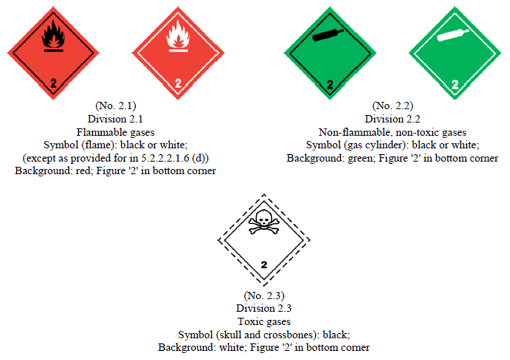More info about the marking and labelling of dangerous goods can be found here. Classes of dangerous goods according to SOLAS Chapter VII Part A the BC-Code and the IMDG-Code are as follows.
Classes Dangerous Goods International
9 Classes of Dangerous Goods _____ Rev00 Updated 19 Mar 2019 1 Class 1 - Explosives CLASS 1 EXPLOSIVES SUB-DIVISIONS Division 11.

Class d dangerous goods. Classification of dangerous goods. Such goods are not listed because the transport of some. Click on the DG Class diamonds below for information on each class of hazardous materials.
The Department of Transportation categorizes dangerous goods into nine hazard classes that describe different types of risks. Commonly transported class 7 dangerous goods include enriched uranium radioactive ores isotopes and some medical equipments or parts. More than one subsidiary class is possible.
For most of dangerous goods the primary class and subsidary class can be found in Dangerous Goods List. Substances and articles which have a projection hazard but not a mass. Special provisions and exemptions related to dangerous goods packed in limited quantities.
Dangerous goods within cargo transport units. Consignment procedures labeling and marking of containers and vehicles. 07012016 Class 7 Dangerous Goods Examples.
For goods having multiple risks which are not specifically mentioned by name in Dangerous Goods List you have to follow the following hazard precedence rules to determine their primary hazard class and subsidiary class. 16012019 Dangerous Goods Storage. As the Australian dangerous goods code explains.
14122012 The provisions of this subsection apply to the segregation of. Dangerous goods often recognised as hazardous materials may be pure chemicals mixtures of substances manufactured products or articles which can pose a risk to people animals or the environment if not properly handled in use or in transport. Dangerous goods stowed in the conventional way from those packed in.
Transportation of harzardous materials. Substances including mixtures and solutions and articles subject to this. 07012016 The subsidiary class is the other class that further identifies the hazards of the dangerous goods.
Division 12 Substances and articles which have a projection hazard but not a mass explosion hazard. Division 11 Substances and articles which have a mass explosion hazard. The Australian Dangerous Goods Code establishes all hazardous substances into 9 different dangerous goods classes according to their physical and chemical properties and the risks that they present.
Packaging and tank provisions. Packages containing dangerous goods and stowed in the conventional way. Class 7 Dangerous Goods Label.
Both by excluding extremely dangerous goods from normal transport and by covering all subsidiary risks inherent in some goods. Dangerous Goods List sorted by UN number with references to specific requirements set in chapters 3 to 9. 28012021 Dangerous Goods Hazard Classes.
3113 The Dangerous Goods List does not include goods which are so dangerous that their transport except with special authorization is prohibited. Dangerous Goods Classes Australia. Substances and articles which have a mass explosion hazard Division 12.
The picture below shows hazard symbols for Class 7 dangerous goods. Learn more about commonly shipped dangerous goods PDF for each hazard class. CLASS 1 Explosives.
16 rows UN class Dangerous goods Divisions if applicable Classification. For example Class 3 includes flammable liquids and Class 8 includes corrosive materials.
Tdg Placards View All Western Safety Sign
Dangerous Goods Classes And Symbols
Transport Of Dangerous Goods In Depth Croner I
Dangerous Goods Regulations Dgr Category 8 General Subject Course
Transport Of Dangerous Goods In Depth Croner I
Https Law Resource Org Pub Us Cfr Ibr 004 Imo Imdg 1 2006 Pdf

0 comments:
Post a Comment